NASA Climate Budget Sees Cuts As CO2 Levels Surpass 400 PPM
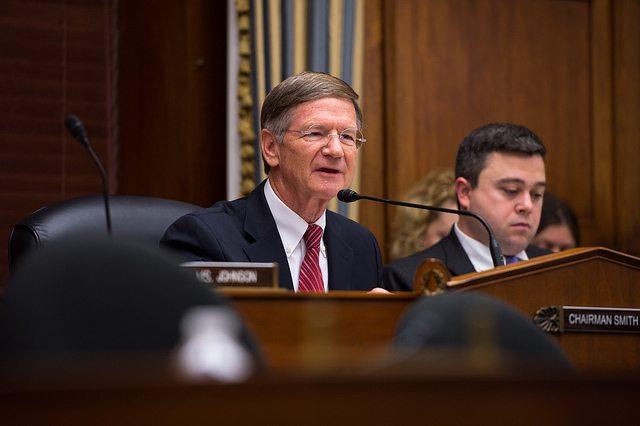

Congressional Republicans, many with strong financial backing from the fossil fuel industry, have protested loudly against what they call President Barack Obama’s “war on coal.” Now, it seems, they are fighting back with a war of their own — a war on science.
The latest action in this war is taking place in the Congressional committees that act as filters to determine which bills actually get voted on and have budget authority over a number of government agencies.
In a shocking development, the House Committee on Science, Space and Technology, headed by Rep. Lamar Smith (R-Texas), submitted a new budget for NASA that would cut the earth science budget by $300 million. That’s an 18 percent cut compared with this year. I say shocking because this is happening at a time when NASA just reported that atmospheric carbon dioxide has exceeded 400 parts per million for the first time in human history.
Don’t look to the Senate to bring balance to this action. The Senate’s Committee on Space, Science and Competitiveness is chaired by Ted Cruz, and the Committee on Oceans, Atmosphere, Fisheries and Coast Guard, is chaired by Marco Rubio. Both of these men are opposed to taking action on climate change.
Consider the fact that NASA’s Earth Science program is providing some of the most detailed data on the changes that are occurring in the planet’s ice sheets, ocean and atmosphere. These include the GISS global temperature analysis, cloud studies, aerosols, precipitation patterns and measurements of solar radiation, not to mention the CO2 measurements being taken at the Mauna Loa observatory since 1958. By drastically cutting the funding for these types of activities, the committee is essentially saying, “We’re not really all that interested in what is happening to the Earth’s climate.” Apparently, the way they intend to improve the lives of those they claim to represent is grounded in some alternate reality that does not require a habitable planet.
It was at Mauna Loa where the 400 PPM reading was just recently recorded. Here is what some NASA scientists had to say about that development:
“Passing the 400 mark reminds me that we are on an inexorable march to 450 PPM and much higher levels. These were the targets for 'stabilization' suggested not too long ago. The world is quickening the rate of accumulation of CO2, and has shown no signs of slowing this down. It should be a psychological tripwire for everyone," said Dr. Michael Gunson, global change and energy program manager; and project scientist of the Orbiting Carbon Observatory-2 satellite mission, NASA Jet Propulsion Laboratory.
“CO2 concentrations haven't been this high in millions of years. Even more alarming is the rate of increase in the last five decades and the fact that CO2 stays in the atmosphere for hundreds or thousands of years. This milestone is a wakeup call that our actions in response to climate change need to match the persistent rise in CO2. Climate change is a threat to life on Earth and we can no longer afford to be spectators," said Dr. Erika Podest, carbon and water cycle research scientist.
NASA’s administrator, Charles Bolden, said the budget action, “guts our Earth science program and threatens to set back generations’ worth of progress in better understanding our changing climate, and our ability to prepare for and respond to earthquakes, droughts, and storm events.”
Meanwhile, the committee’s explanation for the action had to do with its version of restoring balance. Smith said that existing the NASA budget favored the earth sciences “at the expense of the other science divisions and human and robotic space exploration.”
Smith went on to say that, “For more than 50 years, the U.S. has led the world in space exploration. We must ensure that the U.S. continues to lead in space for the next 50 years.”
Smith and his cronies appear to be far more interested in winning some imagined space race than in the fate of the planet. I’m seriously wondering if they aren’t confusing NASA with NASCAR.
I’m trying find an apt analogy for this kind of blatant dereliction of duty. I would say it’s akin to the crew of the Titanic sitting down to a game of poker after learning they are surrounded by icebergs, except that in this case there is far more at stake. The justification for the poker game could be their thinking they had no chance anyway, but the Titanic was considered indestructible. Perhaps the House committee has decided that it’s already too late to save this planet and that our only hope lies in looking for other ones that have the essential elements of air, water and fossil fuels. But that type of long-range thinking has never been their hallmark.
Most scientists agree that we need to reduce the atmospheric level of CO2 to 350 PPM or below to avoid the most catastrophic impacts of climate change. That will take a long time to achieve and will only happen if we cut emissions now. Yet with signals like this coming from these boys in Congress, it’s no surprise how many people fail to take this seriously.
Image credit: NASA HQ Photo: Flickr Creative Commons
Mexican Startup Goes Beyond Fair Trade


Editor's Note: This post originally appeared on Unreasonable.is.
By Cayte Bosler
The hype of fair trade products and the promise of their goodwill careened when the majority of U.S. people polled in favor of “renegotiating” the model trade agreement. The charge of pitiful labor conditions, poor wages and unfair trade agreements is a convoluted problem laid at the doorstep of NAFTA, now nearing its 23rd year with a more than questionable track record. But Semina Boni Terra doesn’t prioritize competition in the hostile trade environment between Mexico and U.S. corporations.
Montse Castro, founder of the Mexican startup, re-imagined the agriculture business model as fair trade in practice, not promise—on a national level—to curb food poverty and preserve cultural and economic integrity in rural Mexico.
“We work hand-in-hand with small-farm producers located in the state of Morelos, Mexico, cultivating Chia Seeds, developing synergies with government entities and the experimental agricultural fields of the Faculty of Agriculture of the Autonomous University of the State of Morelos (UAEM),” explains Castro who works with 20 farmers and has increased each farmer’s profits by 20 percent since 2012. “It’s a joint venture,” otherwise known as an agglomeration economy, “where the farmers benefit from technical training and assessment, input, generating aggregated value and commercialization of their products.” Semina invests between 45 to 55 percent of total costs. This brings stability to fluctuating economic and social factors governing trade. If environmental factors, for example, affect the crops, farmers lose less.
When farmers cluster together, cost of production declines significantly. Even with competing brands in agriculture, there are advantages because the cluster attracts more suppliers and customers than a single farm could achieve alone.
“Our brand is sold as individual packages but we continue to sell directly to businesses,” says Castro. “Organic crops are reaching a better price in the market, between 20 to 40 percent more than conventional crops. We are trying some options to transform chia seed and Amaranth to ready to eat and ready to drink, we want to develop healthy convenience food.”
In Mexico, 20 million people live in food poverty, 25 percent of the population do not have access to basic food and one out of five children suffer from malnutrition. International fair trade corridors do little to ensure security during economic fluctuations and offer almost no structural support such as access to new technology and education on best practices. Numerous investigative reports find practices ripe with exploitation. The cycle deepens: US companies do little to enforce social responsibility guidelines that call for basic worker protections such as fair pay practices. As a result, many Mexican farmers migrate north to the US for better wages.
“Since I started studying sociology I realized the problems that my country has been dragging for a long time ago, but nobody proposes a change,” says Castro of her motivation. “After analyzing the current situation of the Mexican fields, and the chronic degenerative illnesses that commonly affect Mexican people, I decided that the needed course was clear, and understood that food is an essential resource for the survival and progression of human beings, and I would have to focus on the production of it. This allows a significant impact on society; just as the phrase says: we are what we eat.”
Not all of Mexico’s agriculture problems can be blamed on NAFTA. Even in a more direct supply chain with just oversight, higher prices than conventional foods for fair trade, organic options can be a difficult sell.
“It’s hard to maintain brokers’ loyalty because their driver is price, which means their are not able to pay an extra price for social impact,” says Castro. “We decided to start selling in a business to consumer channel.” Their online store offers individuals healthier, socially responsible options. Without the organizational help of Semina Boni Terra, these rural farmers likely wouldn’t reach such a diverse market or achieve brand recognition.
“In Mexico 24 million people are living in rural areas and 65 percent of them are in a poverty situation,” explains Castro. “Agricultural activities are undervalued and they’re no longer profitable.”
“I wanted to design a innovative and social impact solution to rescue the Mexican countryside and all the people who is living there. This is why we build bridges between Mexican farmers and consumers through fair trade and production along with the distribution of rich, nutritious, and natural foods. The chia seed is our main crop because we care and respect the natural biodiversity of the country.” Of future needs, Castro says more investment in technology and infrastructure to make labor more efficient is priority.
As reported by the New York Times, after promising to renegotiate Nafta, the Obama administration pushed the Trans-Pacific Partnership back in 2013. The Pacific pact, which is a regional Nafta-style trade agreement, grants even greater privileges to transnational corporations and stands to exacerbate problems for Mexico and other developing countries.
We can stop holding our breath for international fair trade agreements to act as the white knight the world once hoped for. Fortunately for rural Mexico, Semina Boni Terra’s solution is local empowerment. NAFTA and distant governments can be taken out of the equation, and our fingers can point towards supporting them directly, not at bad policy. Check out their store here.
Image credit: Semina Boni Terra
Cayte is an Unreasonable correspondent. She collects stories and lessons from and for entrepreneurs dedicated to solving the world's most pressing problems. She writes on a variety of subjects including science, technology, international development, the environment and travel.
Convincing consumers value of sustainability: new guide


Business for Social Responsibility (BSR) and CR consultancy Futerra have launched a guide to help sustainability teams and marketers more effectively influence consumers to make better choices by giving them what they want.
Selling Sustainability is the result of a long-standing collaboration between BSR and Futerra with the Sustainable Lifestyles Frontier Group and its eight member brands – AT&T, Carlsberg, eBay, Johnson & Johnson, L’Oréal, McDonald’s, Wal-Mart and Waste Management.
The guide proposes several ground rules for selling sustainability, including: offering consumers value - most campaigns and products focus on what consumers can do for sustainability, but they need to clearly state the value that sustainability can give consumers; and highlighting the benefits - there are many barriers, both perceived and real, to changing habits and trying new things. It is necessary to break down these barriers and highlight the benefits of these new behaviours and products.
You can access the guide here.
Picture credit: © Bennymarty | Dreamstime.com
Now is Not the Time to Drill in the Arctic


We're at a critical moment. Clean, renewable energy is growing faster than ever before. Here in California, solar panels are sprouting up in neighborhoods all across the state. More and more companies are shifting to 100 percent renewable energy. Just last week, we learned about Tesla's new home-battery packs, meant to store solar energy. They are now sold out until mid 2016.
Yesterday's headline, however, read like something from another era. President Barack Obama's administration, a supporter of the clean-energy economy, gave conditional approval for Shell to drill for oil in Chukchi Sea, off the Alaska coast in the Arctic Ocean.
Let that sink in for a second. The Arctic Ocean is the world's most undeveloped, natural ocean. It is home to polar bears, numerous migratory birds and an incredibly fragile ecosystem. For most of the year, it is covered in ice and impossible to drill.
“The Arctic is one of the most beautiful places on Earth — and one of the most forbidding and vulnerable. What would happen if a major spill occurred?" asked Andrew Hartsig, director of the Ocean Conservancy’s Arctic Program, in a public statement. "We haven’t ensured that important subsistence and ecological areas will be adequately protected, and don’t have the capacity to respond effectively. Until we do, the administration should not approve drilling in the Chukchi Sea.”
Dangerous and risky
Remember the Deepwater Horizon spill in the Gulf of Mexico back in 2010? The largest marine oil spill in history pumped millions of gallons of oil into the gulf, devastating marine wildlife. The economy of the region is still suffering the consequences.
Compared to the Arctic, though, the gulf is a breeze. There's no ice; there are numerous seaports, an airport, and regular Coast Guard traffic and other shipping in the area. The Arctic, in comparison, is remote. There are no cities within thousands of miles, no major airports, no seaport, and no regular shipping or Coast Guard patrols. If a spill happens, imagine the logistical nightmare in trying to bring rescue equipment to such a remote area. And if it's winter ... forget about it.
This is no nightmare scenario. It is is all too real, because the government's own analysis found that, if drilling goes ahead as planned, the likelihood of a large spill is 75 percent, with small spills almost certain to happen. That is far too high of a risk for Shell, for the Arctic and for us as human beings.
Then, there is climate change. Last year's Intergovernmental Panel on Climate Change (IPCC) report made it clear that we need to cut back dramatically on fossil fuel usage. Yet, this plan will do the exact opposite, adding more oil to the global economy, driving prices down and limiting opportunities for clean, renewable energy.
In fact, it is only because of climate change warming the poles that it is now ice-free enough for drilling to even take place. It is a vicious cycle: Climate change -- due to the burning of fossil fuels extracted by companies like Shell -- warms the poles, which opens up more region to drilling, more extraction and ... well, I think you can see where this is going.
"Both science and common sense is crystal clear in telling us that undeveloped dirty fuels, especially those in the Arctic, must remain in the ground if we are to avoid the worst consequences of climate disruption," said Michael Brune, executive director of the Sierra Club, in a public statement. "Downplaying the threats drilling poses to our climate, communities and environment -- as Shell continues to do -- does not in reality make the threats any less serious. The Obama administration must say no to drilling in America’s Arctic Ocean, cancel these leases, and remove future leasing from the five-year offshore drilling plan.
The fight isn't over
Activists are not taking this news lightly. In Seattle, where Shell's rigs are planning to dock and use as a staging ground for their exploratory activities, a grassroots movement has sprung up -- leading to the city's mayor to tell Shell they need a new permit to station in his city's port. Environmental organizations including Greenpeace, the Sierra Club, Defenders of Wildlife and numerous local groups in Alaska are planning to fight the administration's move.
Shell could learn from its peers. Last year, Chevron decided that the risk -- both to its investment and to the environment -- were too high, and halted its plans to drill in the Arctic. Let's hope that Shell, and the Obama administration, both come to their senses soon.
To learn more about the fight to save the Arctic, visit the Our Arctic Ocean coalition site.
Image credit: Pixabay
How Diversity Can Boost Creativity in the Tech Industry
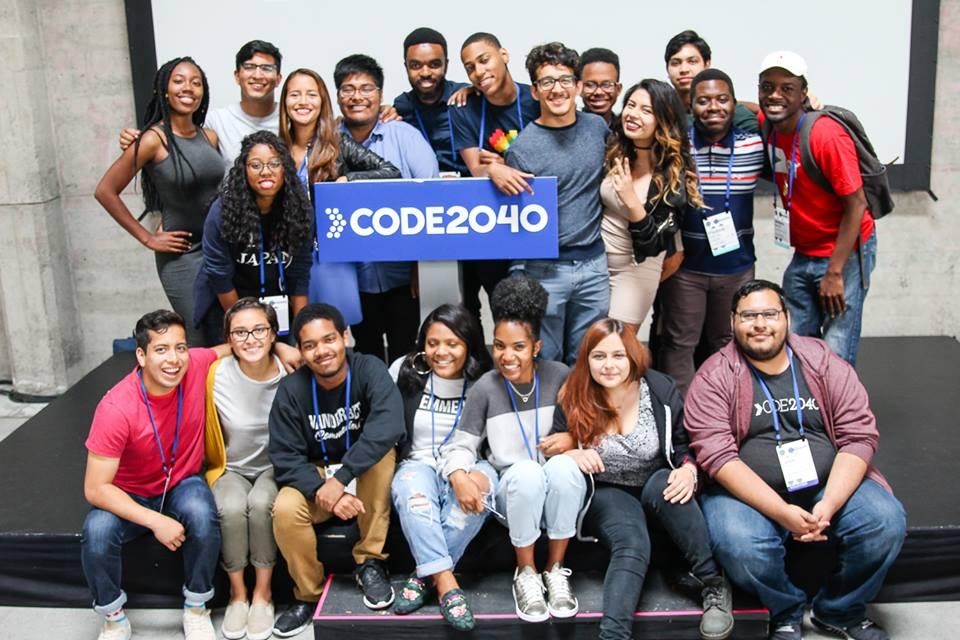

By 2040, America’s demographic landscape is expected to look quite different than it does today: Minorities will be the majority, and 1 in 4 Americans will be of Hispanic/Latino origin. If you peer into most Silicon Valley tech companies today (or most Fortune 500 companies, for that matter), the workforce you will see does not at all match current or projected demographic realities.
Diversity is arguably even more important in sectors like tech, where creativity and out-of-the-box thinking are vital for success. According to organizations such as Code2040, this racial and ethnic disparity is not only a business risk – it’s the greatest economic opportunity of our time.
"Companies that have ethnic and racial diversity perform 35 percent greater than those that do not," said Karla Monterroso, vice president of student programs at Code2040.
"In tech, diversity is often not on the top of people’s list because often times those in the tech system don’t have diverse networks. Yet, we’re seeing that the current tech talent pool is increasingly shrinking, and in the future not having a diverse pool is going to limit companies from taking off. Right now we have the luxury of seeing the cliff before the horizon line."
According to the U.S. Bureau of Labor Statistics, 1 million tech jobs will go unfilled by 2020 at the current rate that qualified students (white, black or brown) are graduating with science, technology, engineering and math (STEM) related degrees and joining the tech workforce.
To address the talent gap and help transform the nation’s economy, Code2040 places high performing Black and Latino software engineering students in internships with top tech companies. They also provide students with mentorship, leadership training and network development to accelerate students’ success in the tech sector. In return, these students bring their fresh perspectives, new ways of thinking, and creativity to spur innovation in a sector currently of and for the few.
Other organizations hacking the racial diversity problem and building a diverse pipeline in tech include Startup Box South Bronx, Opportunity Hub, Digital Undivided and AllStar Code.
"Startups are best at solving the personal problems of their founders – the more diverse the founders, the more problems can be solved and the more people who can be positively impacted by technology," said Michael Seibel, partner at the seed accelerator Y Combinator.
"Big companies need to invest in outreach and be involved in marketing software engineering and computer science to the best and brightest minority and women math and science students. Startup angels, incubators and accelerators need to step up outreach and make themselves more welcoming to a diverse set of founders."
In addition to helping solve more problems for more people, a diverse workforce can also benefit a company's bottom line. A recent McKinsey & Co. report, Diversity Matters, reveals that companies with the highest rates of ethnic and gender diversity are 35 percent and 15 percent, respectively, more likely to achieve better financial performance than their industry counterparts.
Some Silicon Valley companies are making strides to tackle the racial and gender gap in tech. Earlier this year Intel announced its pledge to spend $300 million to support workforce diversity, and Google just announced it will invest $150 million this year – an increase from the $115 million it spent last year – to attract more women and minorities to the company and the tech industry. Apple and Symantec have also invested dollars and time to help narrow this inequality gap.
"A lot of times when people think of diversity, they think of it as an emotional problem, but it’s an operational imperative," Monterroso said. "The more the companies invest in diversity now, the better off we’re going to be."
Diversity of workforce will lead to diversity of talent and output. This can only lead to more resilient companies with the deft and creativity to respond to market needs.
Image courtesy of Code2040
Networking and NetWorthing to Success
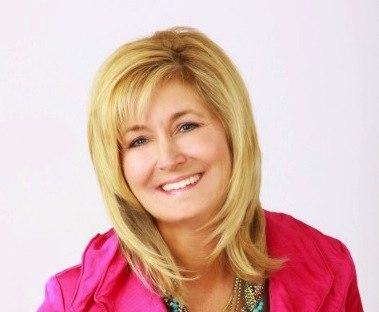

Whether you’re a sustainability professional or not, knowing your worth can mean the difference between a budding career and a static one. For women – who represent more than half of today’s entry-level hires but decrease in number as they climb the corporate ladder – developing personal and professional leadership skills that empower you to show your value is especially important.
As one study shows, while women outnumber men at the early stages of their careers, that number declines to 37 percent when individuals are promoted to managers, and drops to 26 percent at the vice president and senior executive level; only 14 percent of executive committee spots are held by women, and only about 4.6 percent of CEOs in Fortune 500 companies are female. That gap is even wider for women of color.
While today’s women’s leadership gap is complex, at the center of the divide is often an individual’s struggle with understanding, communicating and sharing their value with others. Often times the simple act of networking can help one jump those hurdles to career success. We spoke with expert networker and professional development facilitator Sarah Michel, the creator of the NetWORTHing process and author of "Perfecting Connecting: A Personal Guide to Mastering Networking in the Workplace," who shared valuable insights on what it means to be a leader – for oneself and others. Michel will be speaking at the upcoming Women's Leadership Conference in Las Vegas.
TriplePundit: What does being a leader mean to you?
Sarah Michel: A leader is someone who opens doors for people. Mentoring is not my favorite word – my favorite word is sponsoring. When you sponsor someone, you create opportunities for people, and those people will then pass it on and open doors for others. As a woman, I think the more we can open doors for other women, the better. Good leaders are constantly developing people.
3p: How has your understanding of personal leadership changed or evolved throughout the years?
SM: When I've been in leadership roles, I’ve always looked for people who are smarter than me. I like to surround myself with really smart people, and I've been thrilled when people on my teams have really shined. It’s been great to know that I've been a part of that; that's really rewarding for me. I'm a huge team person and have always been very collaborative, because honestly it's so much more fun. I don't hire people who always agree with me, because I think the best decisions are made when different perspectives go into making a decision. It's about having a collaborative team effort and letting individual people's light shine. I'm not a leader who likes to sit in a room and make decisions on my own. That's how it's really evolved for me.
3p: What role does personal leadership play in networking and career advancement?
SM: Networking is not about giving out more business cards; it's about living your life as a hub. My personal leadership is thinking that I live in the hub of my network – where I'm constantly introducing people in my network and connecting them. Nothing makes me happier than to be somebody who connects people who end up working together, doing business together, even going out together. I love being a resource to people and not expecting anything in return.
I think great leaders have high influence – they can get people to return a call, return an email. When you have influence, you have access. Influence and access, that's all you need for your career. But you have to treat it with the respect it deserves. And you constantly need to be making deposits. I really like that Zig Ziglar quote, "You can have everything in life you want, if you will just help other people get what they want.”
3p: How do you balance "work and life," and what skills are required to be a leader who has a well-balanced life?
SM: I've been really fortunate that for the last 15 years I’ve had my office out of my home. I have two daughters (one is about to graduate from college and the other in high school) … and because I've worked for myself, I've been able to carve out time when I needed to be in school. I've always taken four to six weeks of vacation a year. When I’ve worked on projects, I’ve always worked with people who are flexible, and know I’ll get the job done, even if it means taking off some time during the week and working on the weekends to get it done.
3p: What about someone who's in a job that doesn't allow that flexibility?
SM: All the years I’ve been doing this, what it boils down to is that men ask, and women don't. If you're in a situation where you're in a 9-5, you can ask for that flexibility or constantly be looking for opportunities to earn the trust needed to get that flexibility. Look for ways to grow your network internally within your company, to share your value. Step up to plan the annual meeting, look for opportunities to meet key leaders. The more you can grow your net worth, the more your opportunities go up for promotion.
Also, be constantly keeping your boss informed of your accomplishments. If you get a compliment form a client, send it to your boss – it’s not about bragging or being modest. Just send on the compliment; it’s a fact.
3p: How do you help young leaders (men and/or women) develop in their careers?
SM: I'm actively doing that with my daughter right now, who's about to enter the job market. What I say to her and what I say to other women is: When you look at a job description, realize that it's a wish list. Most employers are really just looking for someone who has a good attitude, is willing to learn and has a good work ethic. What's very hard to find is a really good person who is reliable, honest – if you've got those things, apply, and that will get you in the door.
When I applied to a job once, they were looking for someone with a master’s degree, and people with Ph.Ds were applying. I didn't even think about that fact because I knew I had the practical work experience and had a lot to offer, and I ended up beating out the other people. Qualifications are all relative when you're able to present yourself in a way that shows you can provide an answer to their pain point, or are you're willing to put the time and effort to learn how to solve their problem.
Want to hear more? Attend the Women's Leadership Conference at MGM Grand in Las Vegas July 13-14.
Legislative Trend Challenges Supply Chain Management
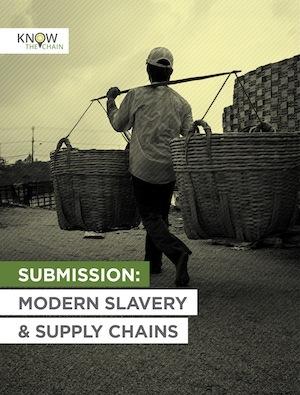

By Kilian Moote
As John Oliver recently pointed out, “Sweatshops aren't one of those nineties problems we got rid of.” In fact, it’s been only two years since the Rana Plaza tragedy killed more than 1,000 workers and once again exposed rampant exploitation within supply chains.
The devastation of Rana Plaza, combined with an increased number of regulations, has created a groundswell of reform and pushed companies to consider practices that go beyond their legal liability and exposure. As many companies have learned, however, a patchwork compliance strategy is no longer an effective or practical approach in our global economy.
Consider this: If you're a multinational, publicly-traded company with a variety of products and revenue sources based in the United States and operational in the United Kingdom, by 2016 you may have to comply with four separate requirements on how you manage your supply chain’s labor issues. The information you would disclose to meet the requirements of California's Transparency in Supply Chains Act would also need to comply with the requirements of the U.K.'s new Modern Slavery Bill. You would also need to submit a labor recruitment compliance plan to the U.S. federal government to contract with them, and you'd need to provide the Security and Exchange Commission with information on how you audit for conflict minerals in accordance with the Dodd-Frank Conflict Minerals provision.
These laws, none of which required compliance before 2012, have changed the way companies approach their supply chains and operations. They create a complicated compliance tapestry, which may be burdensome to manage for companies that only see these laws through the prism of legal compliance.
Issuing compliance statements or plans, without understanding the strategic importance of how these issues are managed, equates to playing legislative Whack-A-Mole.
The U.K. Modern Slavery Bill, which is likely to affect more than 10,000 companies in 2016, will require companies to disclose what steps they are taking to address issues in their supply chains. Instead of issuing a simple disclosure statement, companies should streamline compliance by considering how these various mandates relate to each other and implementing practices that take into consideration the requirements of all laws, rather than approaching each requirement individually.
Best practices in action
Two recent examples embody this approach. Instead of focusing on the requirements of the law, HP is changing the way it does business. A recent report by Verité found that more than 1 in 4 recruited workers in the Malaysian electronics sector was a victim of forced labor. Recognizing that third-party recruitment practices often lead to exploitation, HP implemented a direct hiring process wherever possible and feasible.
As Stuart Pann, senior vice president of PPS operations for HP, explained, "This initiative underscores our commitment to continually improve our supply chain, one of the largest in the industry, and to demonstrating leadership that encourages other companies to advance their responsibility to protect vulnerable worker populations."
HP’s leadership recognized that addressing this issue extended beyond legal compliance. Addressing it required examining and changing business processes that contribute to labor abuses, either directly or indirectly. "Conditions that contribute to any form of forced labor are unacceptable in our supply chain," concluded Pann.
Late last year, Disney followed other industry leaders by publishing its list of 5,500 suppliers operating in 70 countries. At one time, supplier lists were just as important to the business as the product itself. Today, companies that align transparency norms with their business operations understand that providing more information can be helpful for their reputation and business.
Considering how these laws influence the market, even if a company does not need to directly comply with them, is important. Such practices, which are required by transparency laws, have begun to influence industry groups and the practices of individual companies. For example, in part responding to the U.S. Executive Order 12627 on exploitative recruitment practices within federal contracts, the Electronics Industry Citizenship Coalition (EICC) amended its base code of conduct to prohibit recruitment fees from being charged to workers. Excessive recruitment fees may have a direct link to forced labor and other labor abuses.
Rob Lederer, executive director of the EICC, stated: "The support of our membership to further strengthen the EICC Code of Conduct and ban recruitment fees placed on workers demonstrates the industry’s commitment to combat forced labor worldwide."
By adapting its base code, the EICC is raising the profile of an issue like exploited recruitment practices, which is inherit to the business decision on whether to use labor recruiters or endeavor to hire directly. EICC members may now consider how to implement and monitor labor recruitment practices, even if they are not subject to the executive order.
Taken in isolation, these laws can be considered a clear and straightforward compliance process. However, much like a company’s supply chain, the process is not siloed and must be managed holistically.
Companies affected by these laws should take into consideration the greater context before acting. Searching for resources, such as those listed on KnowTheChain.org, or consulting with industry experts, can help a company think strategically about how to address these issues.
As these new laws clearly indicate, expectations of companies have changed. Consumers, investors, government officials and other stakeholders believe that companies play an important role in addressing some of the most intractable social problems. Companies that choose to see their responsibility through the context of legal disclosures are shortsighted. Laws that require company engagement with these issues are bound to increase. As more companies look to be seen as global citizens, thinking strategically about these issues will be good for business.
Image credits: KnowTheChain
Kilian Moote is Project Director of KnowTheChain and an expert on supply chain transparency and legal disclosure. Previously, he conceptualized and led Free2Work, a risk assessment and evaluation tool, created with the U.S. State Department, focused on promoting transparency in supply chains. In the past, Kilian has served as an adjunct faculty member on corporate social responsibility and sustainable supply chain management at the University of San Francisco and has lectured at the University of Technology, Sydney.
Food Waste is the New Haute Cuisine


Almost half of the world’s food is thrown away every year, while over 800 million people go hungry. In America, our trash cans eat better than 25 percent of the world’s children. Food waste is one of the most pressing social and environmental justice issues of our time, and more than just dumpster-divers are jumping on the bandwagon.
All across the world, food waste experiments are emerging. From pop-up restaurants like INSTOCK in Amsterdam to WastED in New York, food waste is being rescued from local grocery stores and given the celebrity treatment. Even newspapers are serving up food waste recipes to the masses. Food waste is the cause du jour, and a growing number of restaurants and food-preneurs are following the trend.
Rude Food
One catering service in Malmö, Sweden, is taking it one step further. Rude Food is an all-volunteer, mostly vegan, food waste pop-up kitchen and catering service. Instead of just using leftovers, Rude Food focuses on all kinds of food waste. They intervene at the farming, production, wholesale and retail levels. They identify food wastage points and actively recirculate the excess through upscale pop-up dining events and catering.
Rude Food Malmö was conceived by Swedish restaurant, Tapori Tiffins. The service started with a weekend brunch for mostly friends and local dumpster-divers, but it wasn’t long before its eclectic menu got the attention of a growing community of foodies. Once the food waste brunches proved to be a success, the service expanded to catering for outside organizations like city agencies and nonprofits.
Not only is cooking with food waste kind to the planet, but it's also kind to the pockets. Unlike most restaurants that spent upwards of 25 percent of their budget on food, Rude Food spends a mere 5 percent. In addition to the brunch, pop-up restaurant and catering service, Rude Food also offers workshops and a collection of products made from organic food waste.
Why waste?
Over 1.5 billion tons of food produced for consumption gets lost or wasted globally every year. With simultaneous global food shortages and the wasteful overproduction of crops, it is clear that the entire food system is in need of a drastic overhaul. Due to excessive food control laws and the inaccessibility to food that is being thrown away, food waste occurs along the entire spectrum.
Food waste begins at the initial point of agricultural production and spans all the way to final household consumption. While in low-income countries food is mostly lost during production, in industrialized countries food gets lost when supply exceeds the demand. Agricultural food loss is often due to the safety measures farmers take to ensure there will be no shortage of crops in case of unforeseen weather or pest attacks. However, this precaution often leads to a surplus of crops in which the majority goes to waste.
Many times, it is purely the aesthetic or physical defects of the produce that cause it to be thrown away. This focus on the physical appearance of food, regardless of quality, begins at the farm. On some farms, produce is run through a photographic sensor machine that can detect
if a carrot is orange enough or straight enough, and if not -- immediately discards it. The link between quality and appearance continues at the supermarket. Customers choose the most attractive produce, and the more blemished produce gets thrown away.
Consumer attitudes and food innovations
Our obsession with fully-stocked shelves and having an endlessly diverse array of products is the reason for much food waste. Consumers expect store shelves to be well filled, and food products close to their expiration date are often ignored. According to a report by the United Nations Food and Agricultural Organization, “abundance and consumer attitudes lead to high food waste in industrialized countries" but "perhaps one of the most important reasons for food waste at the consumption level in rich countries is that people simply can afford to waste food.”
We are in dire need of a shift in attitude and policy when it comes to food waste. This means creating community-based initiatives which combat food waste, developing markets for products which have been labeled as “sub-standard,” and arranging for the collection, sale and use of food that is still safe for consumption on a commercial scale.
A great example of this is PareUp, an app which connects retailers that are throwing away food with customers who may want to buy that food at a discounted rate. By offering an incentive for both retailers and customers, it provides businesses with a more profitable alternative to throwing food away, reduces food waste and creates a positive impact on the environment.
CropMobster leverages social media to spread the word about local food excess and surplus from any supplier in the food chain. It then allows community members to access the excess goods through an online marketplace. From pop-up restaurants and apps to catering, we are likely to see an influx of innovative initiatives which combat food waste in the coming years.
Good food is a terrible thing to waste.
Meet Six Brave Activists Who Risked It All for Their Communities
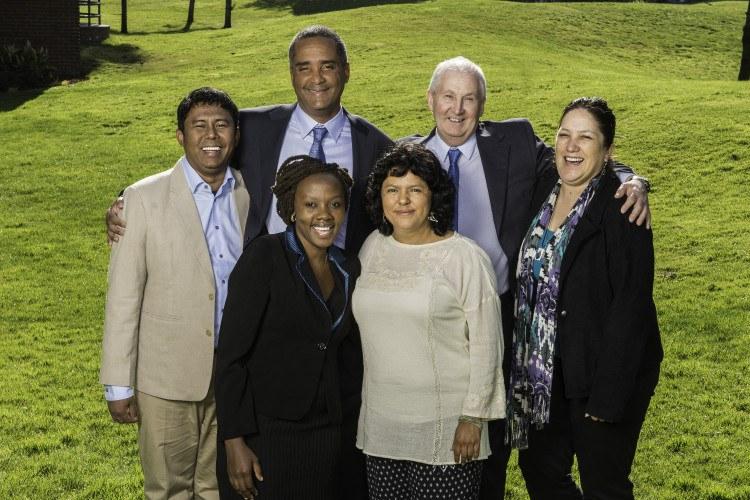

By Priscilla Burgess
Each year the Goldman Environmental Foundation awards six lucky grassroots activists $175,000 each in recognition and in support of their efforts. This year’s winners were honored on April 20 at the San Francisco Opera House in a beautifully choreographed event introduced by Susie Gellman, the daughter of Richard and Rhoda Goldman, and hosted by journalist Dana King.
Each of the winners was featured in a short film about their struggle, narrated by Robert Redford. Then the winners, gathered from all over the world, gave a brief speech. There is no doubt of their courage, commitment and vision.
Each winner is something of an environmental hero: Some faced death threats, prison or loss of livelihood for standing up for their communities’ safety and survival. And in every case, the adversary was their own governments. Read on to meet them.
Marilyn Baptist, Canada
A copper mine in British Columbia, approved by the provincial government, would have destroyed the Xeni Gwet’in tribe’s land, drinking water and livelihoods. The detrimental impact of mining on the environment is devastating, pervasive, long-lasting, and well-known by both mining companies and governments.
In a spine-tingling scene in the film, Marilyn Baptist, then chief of the Xeni Gwet’in, stood alone in the middle of a narrow, tree-lined dirt road leading to the site of the proposed mine -- where she dared the mining company’s trucks to either turn back or run her down. They turned back.
Faced with protests from tribal groups and scientists, the British Columbian government eventually backed away from the mining project and is now helping to turn the area targeted for mining into a permanently protected tribal park.
Phyllis Omido, Kenya
Originally hired to prepare an environmental impact report for the local metal refinery, Omido soon discovered that the lead released by the refinery was sickening those living nearby. She recommended closing the plant, and the single mother was fired from her job.
Lead poisoning was rife near the refinery, especially among the children — including Omido’s infant son. Lead poisoning is particularly toxic to children, causing potentially permanent learning and behavior disorders.
No longer working for the refinery, Omido kept up her campaign to shut down the plant to save her son and her community. She received death threats; the local authorities accused her of inciting violence and threw her in jail. She didn’t stop.
Finally, the pressure from her campaign and the community forced the closure of the plant and a commitment from the government to clean up the pollution.
Myint Zaw, Myanmar (Burma)
Myint Zaw led a national campaign to stop the Myanmar government from damming the Irrawaddy River. The dam would have wiped out the economy of those living downstream, while 90 percent of the energy generated would have been sent to China.
Americans are used to such campaigns and either support, fight or ignore them, but in Myanmar such campaigns are potentially dangerous. Zaw came up with the brilliant idea of flash art exhibits — put up in the morning, gone by the afternoon — that communicated the danger of the dam to the public while avoiding the notice of the authorities. Added to the exhibits were social media and email. Soon artists of all types were creating their own contributions to the campaign in song, dance, poetry and visual art.
The very unusual public communication program inspired and led by Zaw has so far stopped the building of the dam.
Jean Weiner, Haiti
After years living abroad, Jan Weiner returned to Haiti to discover the loss of the gorgeous beaches he remembered as a child —reefs, fish and mangroves disappearing in the hands of his desperately poor fellow citizens who were trying to make a living selling charcoal made from mangrove, not only destroying the trees but the marine life that flourished among the roots. His challenge was to find other ways for Haiti’s citizens to find income that didn’t destroy the rich, natural habitat. As he said in his speech, “There’s no such thing as a hungry environmentalist.”
For over 20 years, he has been spinning his magic in developing new ways for Haitians to earn money -- setting up organizations that hire local residents and urging his ever-changing government to support his efforts.
Haiti now has two official Marine Protected Areas. Weiner’s job going forward is to be sure they stay protected.
Berta Caceres, Honduras
Berta Caceres has been an activist in Honduras since her student days in the 1980s, so she was the obvious go-to person when citizens of Rio Blanco wanted to find out why heavy equipment was moving into their community.
Caceres discovered that a joint venture between Honduras and China, funded by the World Bank, had been formed to dam the river. During more than a year of protests, the promoters of the Agua Zarca Dam project bribed local leaders, killed at least two people and threatened many others, including Caceres.
The project was shut down due to the continuing protests and the withdrawal of World Bank funding, but Berta is still receiving death threats.
Howard Wood, Scotland
A lifetime of diving off the Isle of Arran, located on the west coast of Scotland, made it clear to Howard Wood that the diversity and richness of this underwater kingdom was gradually disappearing, gobbled up by unrestrained commercial fishing.
Wood and his friend, Don MacNeish, co-founded the Community of Arran Seabed Trust (COAST), which recruited both divers and scientists to identify key areas for sea life regeneration. In 2012, Wood and COAST submitted a proposal to designate the South Arran Sea as a Marine Protected Area. The Scottish government designated 30 new MPAs, including Wood’s South Arran MPA. He is now working to set policy to recognize a community’s right to share management of its seas, a challenge when the European Union is trying to open all coasts to all EU countries.
From neglect and lack of interest to life-threatening attacks, all the Goldman Environmental Prize winners faced the dangerous intersection of power and money — and won. Politicians want to keep their posts, corporations (or other governments) give them the money they need to stay in office and expect favors in return. These favors often mean turning a blind eye to activities that harm their own citizens.
In a perfect world, governments would protect their people and not allow corporations or outside forces to set up massively destructive projects. But we don’t live in a perfect world — and what stands between us and them are the 169 Goldman Environmental Prize winners committed to saving our world.
Priscilla Burgess is CEO of Bellwether Materials.
The Airbnb of Solar? Israeli Transplant Launches Solar-Sharing Network
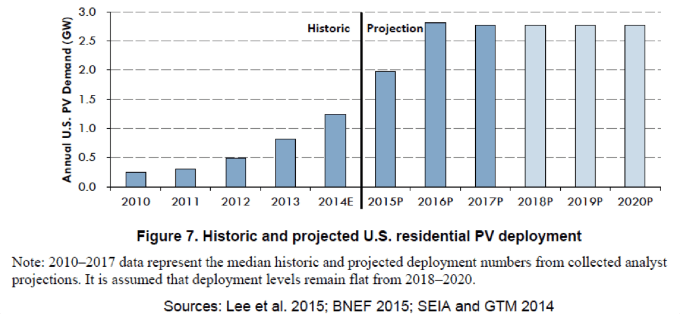

Despite new records for solar power generation being set in the U.S., solar energy's potential remains largely untapped.
Enter innovative solar startups such as Yeloha, a Boston-based transplant from Israel. Highlighted in a recent Inc. feature, Yeloha has come up with a shared solar business model it says can open up the market for photovoltaic systems to all those who rent housing, as well as others that don't own or have access to sufficient or well-sited rooftop space or land area.
Yeloha and others working along the same lines appear to be on to something big, something that proponents and supporters of community solar have been promoting for years. In Yeloha's case, the startup is rolling out its solar-sharing service in select states across the U.S., enabling those currently unable to tap into the humongous amount of energy produced by “that hot yellow ball in the sky.”
Shared solar: Tapping the energy of that "hot yellow ball in the sky"
Despite another record-setting performance last year, solar energy accounted for a mere 0.40 percent of U.S. electricity production in 2014, according to the U.S. Energy Information Administration, Inc. Editor-at-large David Whitford points out. Two-thirds of the 4.093 billion kilowatt-hours of electricity generated across the U.S. last year came from fossil fuels, mainly coal and natural gas; one-fifth came from nuclear. Worth noting: The EIA isn't able to track growing amounts of electricity from solar PV systems installed on utility customer premises, at least at present.
Shared solar, which enables multiple end-users to share the benefits and costs of on- and off-site solar PV systems, holds out the promise of opening up a path that could lead to 100 percent market penetration, according to recently released research from the Department of Energy's National Renewable Energy Laboratory (NREL).
For a variety of reasons – lack of rooftop access, insufficient solar energy exposure or space – nearly half (49 percent) of U.S. households and 48 percent of businesses are currently unable to “host a PV system of adequate size or virtually net meter an entire system themselves,” according to NREL's report.
A P2P network for sharing solar
Sharing economy startups such as Yeloha believe they've struck on a sustainable business model that can provide access to shared solar systems for this largely untapped market space. According to NREL's research report:
“Shared solar could represent 32 to 49 percent of the distributed PV market in 2020, growing cumulative PV deployment in 2015-2020 by 5.5 to 11.0 gigawatts and representing $8.2 billion to $16.3 billion of cumulative investment.”
Clarifying regulations and streamlining procedures associated with installing shared solar energy systems would spur development of new business models and shared solar deployments, such as those being promoted by private-sector startups such as Yeloha, community solar project developers and others, the report authors highlight.
Yeloha's keen to provide access to shared solar systems for apartment and building owners as well as renters. Its Israeli parent company, Generaytor Inc., recently raised $3.5 million in Series A funding from venture capital investors to get its solar sharing network off the ground.
Yeloha is looking to attract “sun hosts” with suitable properties by offering them free PV installations. “Sun partners” share in the renewable electricity produced by the hosts' PV systems. Whether hosting or sharing, Yehola solar-sharing network participants will wind up saving money, the startup says.
In addition to free installations, Yeloha hosts' utility bills will be reduced as a result of the electricity generated by the PV systems, receiving a credit from their electric utility of between 25 and 30 percent of the energy produced. “Sun partners” can continue to share in the electricity produced and utility bill savings as long as they remain in the same utility service area.
Having initially launched the service in Massachusetts, Yeloha is looking forward to expanding across select U.S. states where virtual net metering is in place. “Most people will not go solar; it’s too complicated or expensive," Wall Street Journal's Yulia Chernova reported on April 8. Amit Rosner, co-founder of Generaytor and Yeloha, “believes that today’s solar market serves only a very narrow type of customer: those who have a home, don’t plan to move soon, can afford to buy a system or have good-enough credit to lease one, and whose roofs are well-suited for solar,” Chernova continued.
Yeloha is working to raise another $3 million for the limited liability company that will own and operate the PV systems installed at “sun host” sites. That would enable the startup to install about 100 PV systems, which “points to potential limits on how quickly Yeloha’s network could expand,” Chernova added.
*Image credits: 1) Yeloha; 2) NREL, “Shared Solar: Current Landscape, Market Potential, and the Impact of Federal Securities Regulation"